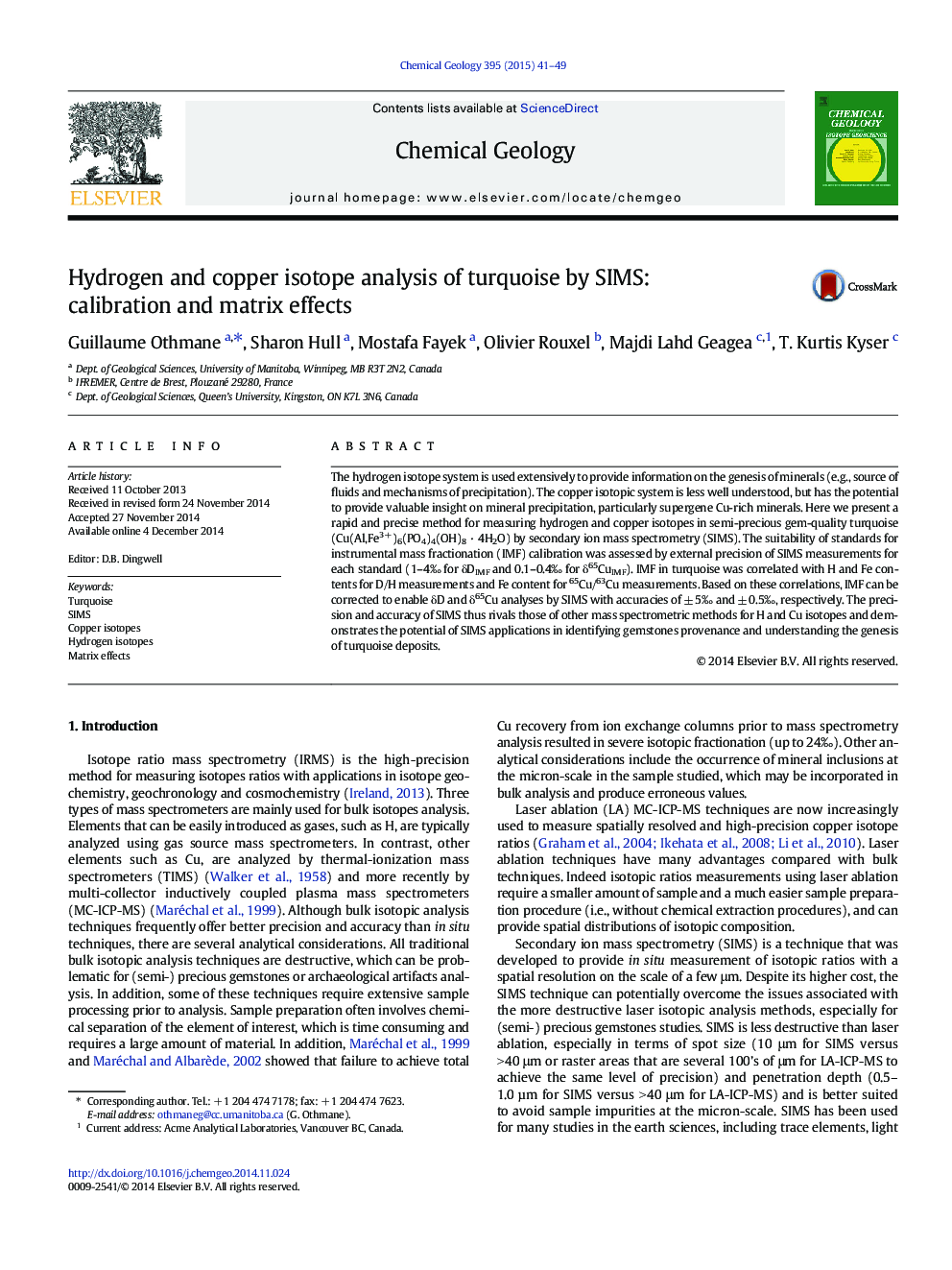| Article ID | Journal | Published Year | Pages | File Type |
|---|---|---|---|---|
| 4698579 | Chemical Geology | 2015 | 9 Pages |
•We developed a method for measuring H and Cu isotopes in turquoise by SIMS.•IMF in turquoise is correlated with H and Fe contents for D/H measurements.•IMF in turquoise is correlated with Fe content for 65Cu/63Cu measurements.•δD and δ65Cu in turquoise can be measured by SIMS with precision of ± 5‰ and ± 0.5‰, respectively.•Applications of this method include determining gemstones provenance and understanding the genesis of turquoise deposits.
The hydrogen isotope system is used extensively to provide information on the genesis of minerals (e.g., source of fluids and mechanisms of precipitation). The copper isotopic system is less well understood, but has the potential to provide valuable insight on mineral precipitation, particularly supergene Cu-rich minerals. Here we present a rapid and precise method for measuring hydrogen and copper isotopes in semi-precious gem-quality turquoise (Cu(Al,Fe3 +)6(PO4)4(OH)8 · 4H2O) by secondary ion mass spectrometry (SIMS). The suitability of standards for instrumental mass fractionation (IMF) calibration was assessed by external precision of SIMS measurements for each standard (1–4‰ for δDIMF and 0.1–0.4‰ for δ65CuIMF). IMF in turquoise was correlated with H and Fe contents for D/H measurements and Fe content for 65Cu/63Cu measurements. Based on these correlations, IMF can be corrected to enable δD and δ65Cu analyses by SIMS with accuracies of ± 5‰ and ± 0.5‰, respectively. The precision and accuracy of SIMS thus rivals those of other mass spectrometric methods for H and Cu isotopes and demonstrates the potential of SIMS applications in identifying gemstones provenance and understanding the genesis of turquoise deposits.
